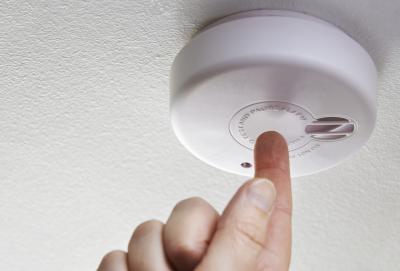An escape plan can save the lives of you and your family. Having an escape plan prepared means your family knows exactly how to evacuate so that you can leave your home safely.
During a fire there is no time to stop and think about an escape route - every second is important. Being prepared before a fire occurs can save your life.
Everyone in your home should be able to clearly understand how to escape in the event of a fire.
- Older Adults
- An older adult with limited or restricted mobility should sleep on the ground floor. A special plan should be made to help anyone in your house who may have limited or restricted mobility.
- Children
- Infants and young children will need assistance when escaping from the home. Teach your children how to escape on their own, in case you can’t help them. They should be involved with creating and practicing the family home fire escape plan.
- People with Physical Disabilities
- Anyone with physical disabilities should have their bedroom on the ground floor. If a family member has a hearing impairment, special smoke alarms with strobe lights or bed shakers are available. A special plan should be developed to help them.
- Public Buildings
- Look for exit signs. Knowing your escape routes is important - even when shopping, visiting the library, or spending time inside public buildings. If you hear a fire alarm in a public building, follow any instructions given over the public address system. In a hotel, take your room key with you as you may encounter smoke and need to re-enter your room for safety.
Always ensure every family member has input on the escape plan.
There are four simple steps when making an escape plan:
Step 1: Install working smoke alarms
Smoke alarms save lives
Install a working smoke alarm on every level of your home and outside sleeping areas. For maximum protection install smoke alarms in every bedroom, especially if you sleep with your bedroom door closed. Test your smoke alarms monthly to ensure they are functioning properly.
Step 2: Draw a floor plan of your home
Make sure you have a safe way to reach the ground
Make an outline of each floor of your home and label each room. Identify at least two exits from each room. Windows can serve as the second emergency exit. If a window is considered an exit, make sure all family members can open the locks and windows easily for a quick escape. Security bars on windows and doors must have a quick-release mechanism to make escape possible.
How to make a home escape plan
Step 3: Choose a family meeting place
The meeting place should be a safe distance away from the house. All family members should be taught to report to the meeting place after escaping a fire. One person should go to a neighbour's house or the nearest phone in a safe location to contact 911.
Step 4: Schedule a home fire drill
Practice getting out of the house through the various exits by holding fire drills. Practice your escape plan by having a fire drill at least twice each year. Practice your home escape plan at night and during the day with every family member.






